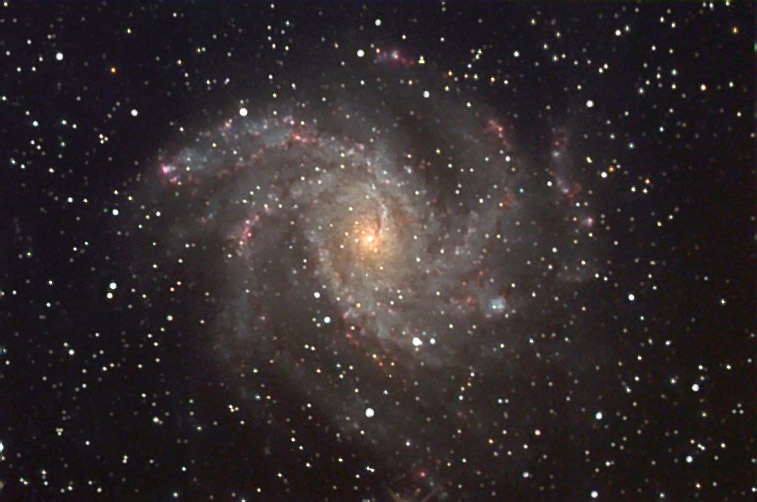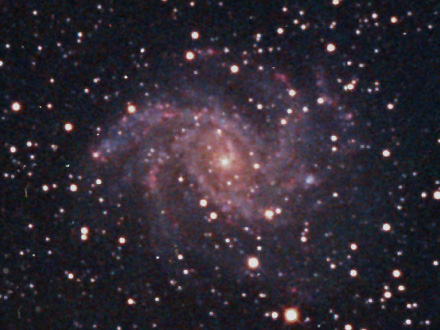|
I derive great enjoyment out the comparison of the best I could do with film astrophotography, versus what I can do now with the the same telescope with my CCD camera. I think that you will agree that for nearly all deep sky objects I can fit in the field of my 12.5 inch f/5 Newtonian, the CCD leaves film in the dust. The first image is obviously the CCD exposure. The face on Spiral galaxy is in a highly obscured part of the milkyway in Cygnus, thus imparting a slight yellowish cast from dust absorption over the entire disk. Numerous pink HII regions of hydrogen dot the arms, with intricate dust lanes right up to the core being visible. This galaxy is 9.6th magnitude, and fills the entire CCD field at 11.6x9.8 arcmins in size.
Additional CCD Data Instrument: 12.5" f/5 Home made Newtonian CCD Camera: SBIG ST7E w/Enhanced Cooling Exposure: LRGB = 60:20:20:36 (RGB Binned 2x2) Filters: RGB Tricolor Location: Payson, Arizona Elevation: 5150 ft. Sky: Seeing 8/10, Transparency 8/10 Outside Temperature: 21 C CCD Temperature: -20 C Processing: Maxim DL, AIP, Photoshop, PW Pro.
|
||||
|
|
||||
|
FastCounter by bCentral |

